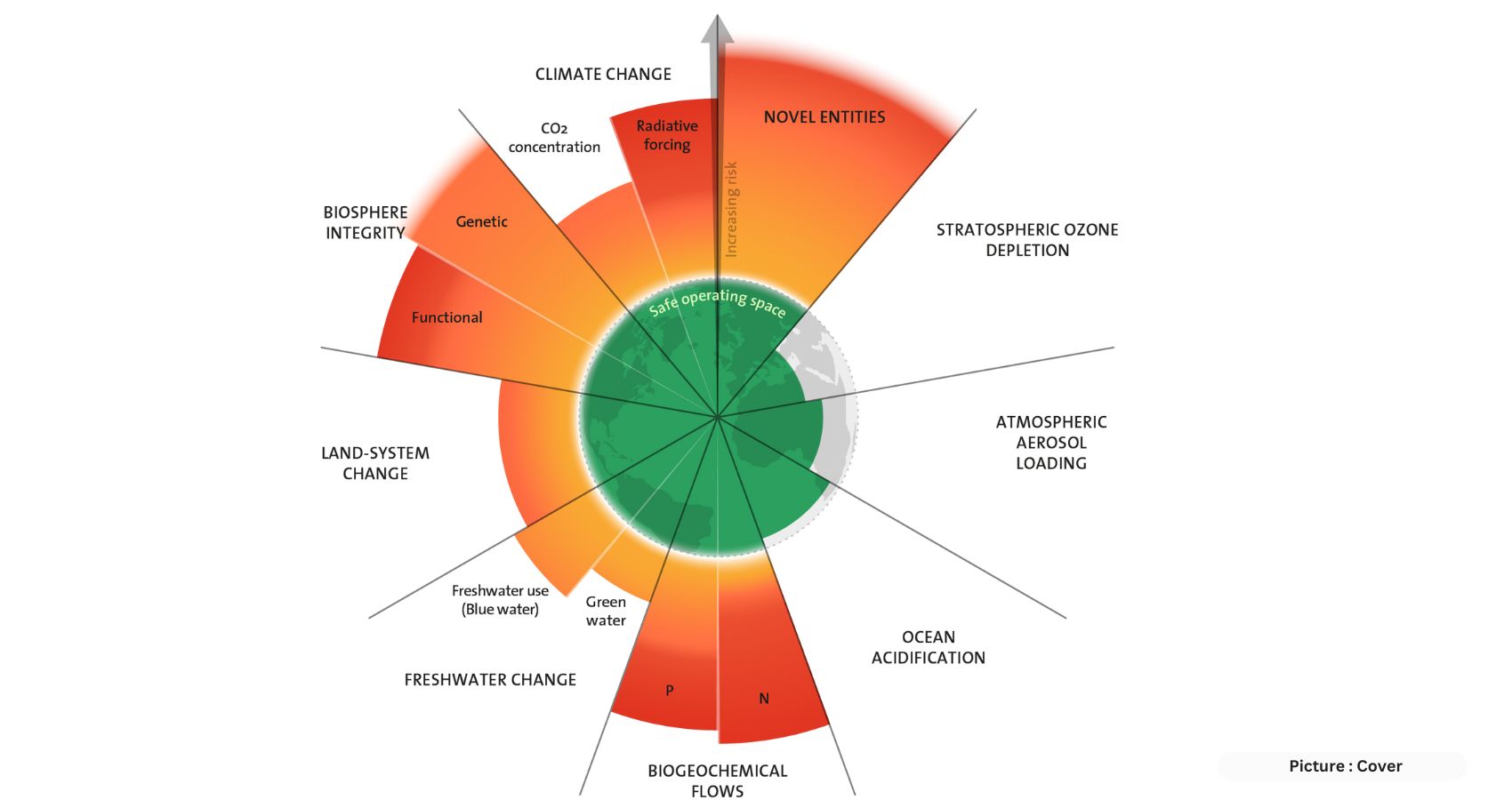In a groundbreaking study, it has been revealed that humanity has transgressed six out of nine planetary boundaries crucial for preserving Earth’s stability and resilience. The study, published in Science Advances, identifies these six boundaries as climate change, biosphere integrity (encompassing genetic diversity and ecosystem energy), land system change, freshwater alteration (encompassing shifts in the entire terrestrial water cycle), biogeochemical flows (covering nutrient cycles), and novel entities (including microplastics, endocrine disruptors, and organic pollutants).
Drawing a striking analogy, Katherine Richardson, the author of the study from the University of Copenhagen, likened these planetary boundaries to blood pressure, stating, “If your BP is over 120/80, it is not a guarantee of a heart attack but it raises the risk. The same is true here — the breaching of individual boundaries does not imply immediate disaster but raises the risk of setting processes in motion that are likely to dramatically and irreversibly change the overall environmental conditions on Earth to one that no longer supports civilization as we know it.”
This research marks an update to the planetary boundaries framework, which was initially introduced in 2009 to delineate the environmental constraints within which humanity can safely function. Katherine Richardson emphasized the necessity of revising the framework to align with our evolving comprehension of Earth’s system dynamics and human impacts on it.
Conducted by 29 scientists from eight countries, this is the third iteration of the framework. The researchers commenced by identifying the processes in Earth’s ecosystem that have played a pivotal role in maintaining favorable conditions for human habitation over the past 12,000 years—a period renowned for its environmental stability and warmth.
Subsequently, they evaluated the extent to which human activities have disrupted these processes and pinpointed the threshold at which these disruptions heighten the likelihood of substantial and irreversible transformations in Earth’s overall conditions. To facilitate their analysis, computer simulations were employed.
The results unveiled that humans triggered breaches in two of the planet’s safety measures—climate and land systems—in 1988, placing us at imminent risk of systemic upheaval. Specifically, the researchers set the planetary boundary for atmospheric carbon dioxide concentration and radiative forcing, which represents the magnitude of the energy imbalance in the atmosphere, at 350 parts per million (ppm) and 1 Watt per square meter (Wm−2) respectively. Presently, these values stand at 417 ppm and 2.91 Wm−2.
Regarding land system changes, the study assessed the global forested land area as a percentage of the original forest cover boundary, which was originally estimated at 75 percent. However, the current global value has plummeted below this safe threshold, registering at 60 percent.
For biosphere integrity, the researchers set a limit of fewer than 10 extinctions per million species-years. Alas, their conservative estimations indicated that the actual extinction rate far surpassed this boundary, standing at over 100 extinctions per million species-years. At present, approximately one million out of the eight million plant and animal species are threatened with extinction, with over 10 percent of genetic diversity within these species lost over the past 150 years.
The second facet of biosphere integrity pertains to the energy accessible to ecosystems, known as net primary production (NPP). It represents the difference between the amount of carbon generated through photosynthesis and the amount expended during respiration. Currently, humans are appropriating roughly 30 percent of the energy that was available to support biodiversity.
This comprehensive study serves as an alarming reminder of the perilous path humanity is treading concerning the environment. It highlights the urgency for concerted global action to reverse these boundary transgressions and safeguard the planet’s delicate equilibrium. Without immediate and effective measures, the risk of triggering irreversible changes that threaten civilization as we know it becomes increasingly substantial.











